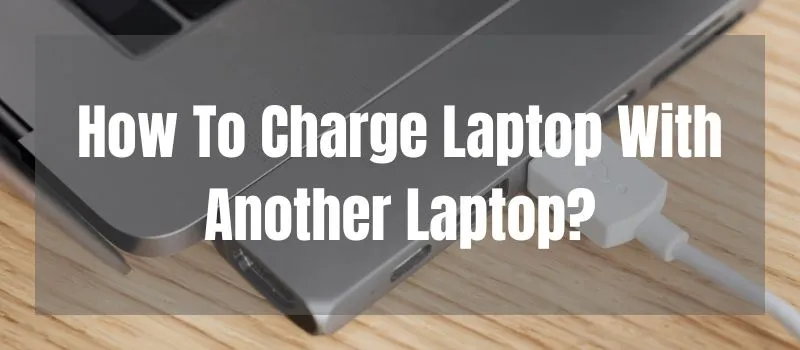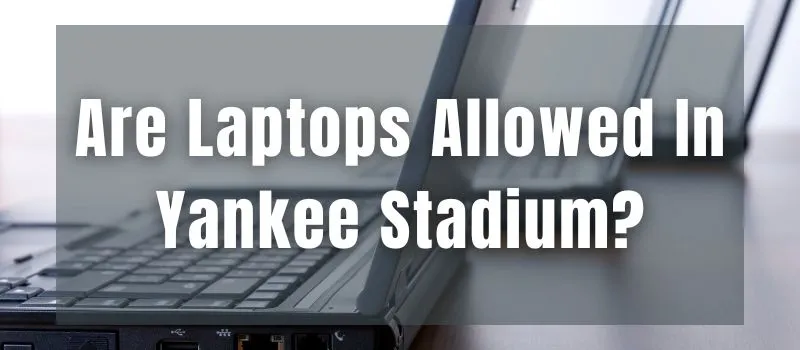Whether it’s your first time streaming live or you’re going into overdrive with your stream, there are some things you are worrying to know about How Much RAM Do I Need For Live Streaming?
Live streaming is not just about providing entertainment for viewers. It can also help promote your brand and generate new leads and customers.
Table of Contents
How Much RAM Do I Need For Live Streaming?

How Much RAM Do I Need For Live Streaming? What if you’re not sure? Here’s a quick and easy way to get a precise answer. We gather a lot of information here in this blog, which may surprise you. If you want to stream live, you will need a certain amount of RAM.
How Much RAM Do I Need For Live Streaming?
In this article, I will show you how much RAM do you need for live streaming? It is not necessary to have a lot. One of the biggest challenges of video streaming is that it requires significant amounts of processing power to play live content.
It often requires far more resources than a standard webpage. That means it might not be possible to live stream from sites like Facebook, Youtube, etc, which may require the use of HTML5. Streaming also requires an understanding of how to estimate the RAM needed. Video streaming is one of the most commonly asked questions. However, the answer to this question isn’t as simple as it seems.
Without wasting time let’s begin.
What is Live Streaming?
Live streaming is when someone broadcasts live content on the internet. Broadcasting today is dominated by live streaming. It’s a technology that lets you live to stream your video directly to Facebook, YouTube, Instagram, Periscope, Twitter, Twitch, and Snapchat. You can broadcast live video online using live streaming technology. You can use this technology to reach millions of viewers quickly and efficiently.
Live streamers use multiple video editing programs to create and upload their content to social media channels and streaming websites. In addition to using video editing software, live streamers must use additional tools, such as webcams, microphones, and computers. Although the live streaming process is relatively easy, the technology behind live streaming can be complex. The live streamer must create, edit, and upload their content in real-time.
Live and on-demand video streaming are two types of streaming. You can choose between live and on-demand streaming so you can decide which is best for you.
Live Streaming Hardware Requirements
If you want to live stream online, the first thing you need to do is decide how you want to host it. Are you going to use Adobe Connect or do you have some other video hosting solution in mind? You should be able to figure out this part quite easily.
If you want to be able to start live streaming immediately, you’ll probably need to get yourself a server. There’s nothing wrong with renting a cheap web hosting plan for this purpose, but if you can afford to build a dedicated server, then you’ll have a lot of flexibility.
At some point, you might just have to give up on having a fancy camera and recording video. Maybe you just want to capture a quick video of your child jumping on a trampoline, or a quick video of your dog playing with a ball. In those cases, getting started with a phone can make things easier. It’s also possible that you have a smartphone but don’t have a fancy camera. There are apps like OBS or Kaltura that can be used in such a case.
Here are a few recommendations for streaming hardware
Live streaming requires very fast internet connections, and you need to have the right tools to stream live events and online content.
Here are some things to keep in mind if you plan to live stream. You should first check the condition of your camera. Make sure you’re using the proper lenses.
Third, make sure you’re using a tripod. Not only will a tripod help keep your camera steady, but it’ll help give your audience the best experience too.
Finally, you need a decent computer. This can be a laptop or desktop. Streaming an entire event is not a magic bullet. If you’re planning to stream an entire conference or event, be prepared to invest in a good computer.
Live Streaming Software Requirements
The last part of a successful live streaming strategy is having software that is capable of handling multiple connections simultaneously. Live video streaming is not just about capturing your audience but keeping them engaged during your presentation.
The beauty of a live stream is that viewers can interact with you throughout the broadcast by commenting and asking questions. If you need to have software installed on a computer, webcam, or smartphone for a viewer to access your stream, check out these suggestions for the best live streaming apps.
Today, more than ever, the average viewer wants to access live streaming content, but there’s still a lot of confusion about what it means and how to do it. Streaming is a form of digital delivery, which means there are software requirements that need to be met before you can start streaming.
There are a few main areas of focus for software that needs to be installed for successful streaming, such as a server, network, application, and player. Some of these components come pre-installed on many streaming solutions.
Live streaming requires significant storage capacity and bandwidth to deliver a high-quality video feed. In addition, the streaming service should provide support for any device with an internet connection.
Live Streaming Plugins
You can either take advantage of the streaming capabilities offered by the WordPress platform or add an external streaming plugin like Flubber, Livestream, or WeVideo. If you opt to build your streaming plugin, there are a lot of different options available and the best ones depend on your audience.
Read More: Can We Use External RAM For Laptop? Ultimate Guide 2022
There are several plugins available for WordPress. They are easy to install and use. In terms of popularity, OBS Studio and Livestream Pro are the two most popular options. Both allow you to add your webcam directly to the site, which is incredibly simple. OBS Studio is free but does require some basic technical knowledge. Livestream Pro is pais and is a bit more complicated to set up, but allows you to connect your webcam to any site.
Facebook Livestream, which enables live streaming of your website’s video. While this is still a useful way to connect with your audience.
Live Stream Monitoring Tools
Monitoring tools can help you be notified instantly of any changes to a feed, such as when someone leaves or when someone enters a room.
Live stream monitoring tools allow brands to keep an eye on their content as it’s being created. Brands have been able to use live streaming technology to boost traffic, increase brand awareness, and boost sales by allowing consumers to interact with their products while they’re still in development.
Live Streaming Apps
There are many ways to watch videos live online. YouTube is still the most used platform, but it has some serious competition. Some of the top Live Streaming apps include Facebook Live, Twitter Live, UStream, Periscope, and Livestreamer. Engaging audiences through these platforms have become the new norm. Many users can broadcast live streaming videos directly to their Facebook Page, Twitter, Instagram, or even their website.
Live Streaming Server Software
Live streaming server software, a piece of software that allows live streaming videos, can be used to broadcast webinars, seminars, and other types of online content directly into a viewer’s browser, with the help of video conferencing services.
XSplit Broadcaster Pro is a streaming server, but I don’t like the fact that I can only stream at 1080p. Conversely, I appreciate the fact that OBS Studio is simple to set up and use, but I don’t like that I can’t control the video bitrate directly. These are the types of things to consider if you’re thinking about picking one of these platforms.
Live Streaming Networks
Some broadcasters are experimenting with live streaming using video-on-demand technology, most broadcasters rely on live streaming networks for real-time access to their broadcasts. Live streaming networks provide high-quality streams to subscribers on multiple platforms including mobile phones, tablets, and connected TVs.
YouTube Live, Facebook Live, and Twitch all provide live streaming services that enable any user to broadcast their video content. Each of these three platforms offers different capabilities, so it’s important to understand what each provides to help you decide which platform is right for your needs.
Live Streaming in 5 Easy Steps
Make sure to use the correct camera and microphone settings. Don’t forget to adjust your screen brightness and sound. Add in a background music track to give your live stream a professional touch. And finally, let people know what time you’ll be broadcasting.
Avoid Common Mistakes while Streaming
Streaming video live from multiple locations can be complicated and tricky, but there are several common mistakes that can be avoided. The most important aspect of live streaming is ensuring that the source device is properly configured. The next most important thing is ensuring that the devices are connected using a reliable network connection.
Next, you’ll need to ensure that the stream is being encrypted properly. You also must ensure that the content is encoded appropriately to allow for the correct bitrate. Lastly, ensure that you’re using a solid video player to ensure that your video is displayed correctly.
The Pros and Cons of Live Streaming
Live streaming is a popular method used to reach a large audience quickly with little to no investment. The problem is, that the video is only available for a short period of time, which can be costly for some businesses that may only need limited exposure. On the plus side, video can be easily produced, which makes it a viable tool for many small businesses.
Live streaming is a relatively new online technology that allows anyone to broadcast real-time video streams through sites such as YouTube and Vimeo. The main advantage of live streaming is the ability to connect directly with viewers. Viewers can interact with the streamer while watching the video stream. They can comment and even send direct messages. This technology has been a hit with many online brands, but there are still some disadvantages that marketers should consider.
The Final Call on RAM
The best way to determine how much RAM you need for your streaming videos is to take the number of viewers your video stream will have and multiply it by the resolution of your videos. If you don’t want to make any assumptions, then simply take the highest number that you think your audience is likely to have.
I don’t need to explain this one. But here’s the deal. You need at least 1GB of RAM if you want to watch videos on YouTube. Even better, you need at least 2GB. It’s simple, really. You need more RAM to do more things at once, including watching more videos.
Streaming video is the future of media consumption, and everyone knows it. But as it turns out, the amount of RAM needed to stream video depends on the type of video you’re streaming. The amount of RAM necessary for streaming video will vary depending on whether the content being streamed is:
- 1080p resolution
- 720p resolution
- 480p resolution
- 360p resolution
- 240p resolution
The amount of data you need to store to stream all those videos depends on what kind of device you’re using to watch them. If you use an Apple TV, you’ll need 2 GB of RAM; if you use a Roku, you’ll need 1.5 GB; if you use a Chromecast, you’ll need 8 GB. That’s the average.
Frequently Asked Questions

How much RAM do I need for my game streaming setup?
RAM requirements are highly dependent on what is being streamed. To stream at a smooth rate you’ll need around 8GB of RAM. This is because most games require a lot of resources to run smoothly.
You don’t need a lot of RAM to run your game streamer. Most game streams require between 8GB and 16GB of RAM to run smoothly. You may want to increase this amount of RAM if your CPU is pretty fast.
How much RAM do I need for live streaming on Mac?
It depends on the resolution of the video you are streaming. If you are streaming high-resolution video then you have to consider more than 8GB of RAM.
You will require around 4GB RAM to run your live streaming smoothly. If you are using an iMac or MacBook Pro with a Retina display, you might require double that amount of RAM to run your live streaming smoothly. So, you will need 8GB RAM minimum to run it. But, don’t worry, we will recommend you to buy 16GB RAM to run your live streaming smoothly.
How much RAM do I need for live streaming on Linux?
If you are using VLC then it is best to have 16GB of RAM. It uses the entire available memory as a cache for files. You can install Xorg-server for higher resolution.
How much RAM do I need for live streaming on Android?
For the best streaming experience, you need at least 4 GB of RAM for recording and 8 GB of RAM for playback. You can use more RAM but it is not required.
How much RAM do I need for live streaming on iOS?
For a high definition (720p) stream you would need about 2 GB of RAM. Most iPhone 6S models have about 1 GB of RAM. This is not enough to stream HD-quality video. If a video has a resolution of 1080×1920, then the total RAM required is around 3 to 4 GB.
How much RAM do I need for live streaming on Xbox One?
The minimum RAM required is 4GB. You can get 16GB RAM cards with that you will be able to stream 4K video. But you can still play the Xbox Live games, watch Youtube videos, and play games on your mobile phone, with 4GB RAM. The minimum amount of RAM needed is 8GB to stream games. You can add more RAM to your machine if you wish.
Conclusion
We try our best to give you more authentic information about How Much RAM Do I Need For Live Streaming? and hope we must not bore you. Please share your feedback. If you have any concerns or questions about this you can contact us at any time. Let us know your valuable question in the comment section so that we can guide you better.
Have a good day, and stay blessed.




